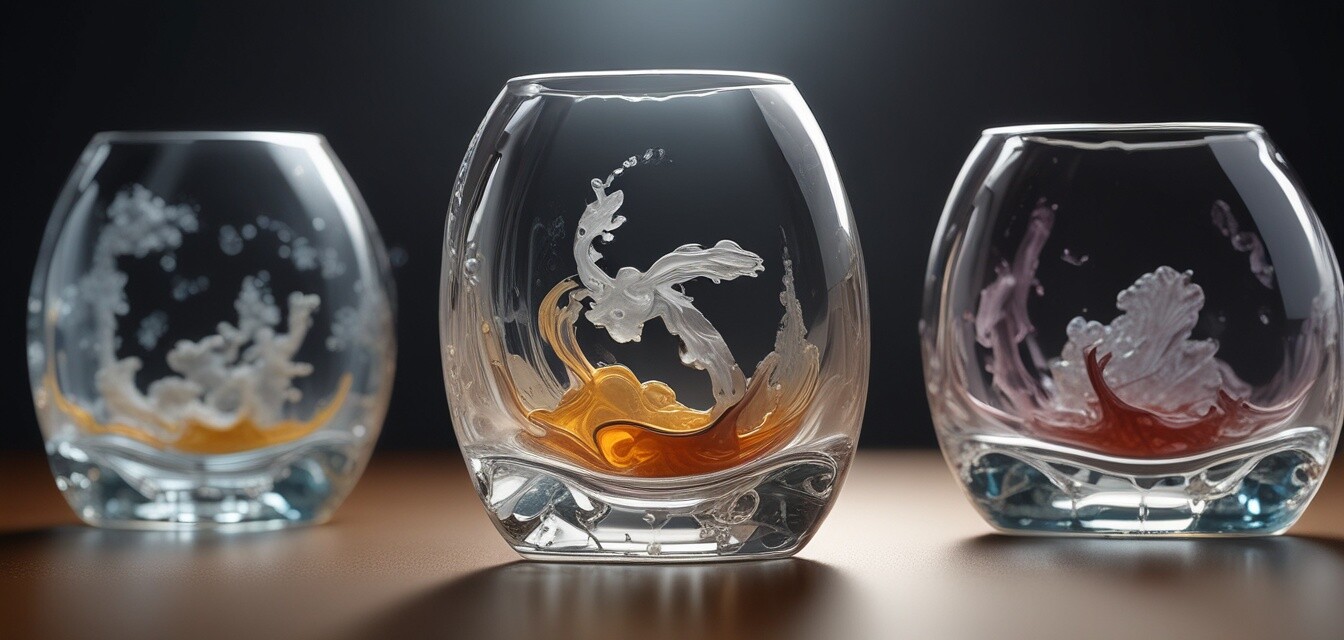
Exploring the Use of Negative Space in Glass Mold Design
Key Takeaways
- Negative space adds depth and intrigue to glass mold designs.
- Incorporating negative space can challenge traditional perspectives in glass art.
- Understanding the principles of design is crucial for effective use of negative space.
- Experimentation with various shapes and techniques can lead to remarkable artistic outcomes.
- Glass molds offer versatility for artists looking to express their creativity.
In the world of glass mold design, negative space can transform ordinary pieces into extraordinary works of art. By understanding and leveraging the concept of negative space, artists can create captivating glass pieces that engage viewers by challenging traditional forms and perspectives. This article will guide you through the essentials of using negative space in your glass mold designs.
Understanding Negative Space
Negative space refers to the area surrounding and between the subjects of an artwork. In glass mold design, this concept can be utilized to create dynamic and intriguing pieces. Here are a few key elements to consider when thinking about negative space:
- **Balance:** Negative space can help achieve a balanced composition in your art.
- **Focus:** It can draw attention to particular shapes or elements in your design.
- **Interaction:** Allows the viewer's eye to move around the piece, offering a more engaging experience.
Importance of Negative Space in Design
Using negative space effectively can greatly enhance your glass mold designs. Here are some reasons why it is essential:
- **Creates Depth:** Negative space helps add dimension to your work, making it more visually appealing.
- **Encourages Creativity:** Embracing negative space can lead to unique solutions and innovative designs.
- **Conveys Emotion:** The way in which negative space is used can evoke different feelings and responses from the audience.
Incorporating Negative Space into Glass Mold Designs
There are various techniques to incorporate negative space into your glass mold designs:
- **Choose the Right Shapes:** Start by selecting basic shapes that can create interesting negative spaces.
- **Experiment with Layering:** Utilize layers in your design to form negative spaces that interact with positive spaces.
- **Play with Transparency:** Glass has a natural translucence—use this to your advantage to enhance the interaction with negative space.
- **Design for Function and Aesthetics:** Consider the dual purpose of your glass piece. Beautiful designs should also be functional.
Common Negative Space Techniques
| Technique | Description |
|---|---|
| Cut-Outs | Creating deliberate openings in the glass that emphasize negative space. |
| Layering | Using layers of glass to create depth and visual interest through overlapping shapes. |
| Shadow Play | Utilizing light and shadow to enhance the effects of negative space in your design. |
| Textured Backgrounds | Incorporating textures behind clearer glass to add a contrasting effect. |
Project Ideas for Negative Space in Glass Molds
Here are a few project ideas that creatively employ negative space:
- **Sculptural Bowls:** Experiment with cut-outs to form unique bowl shapes that play with negative space.
- **Light Fixtures:** Designing light fixtures with layered glass can create stunning visual effects with shadows.
- **Jewelry Pieces:** Use negative space in pendants or earrings for an elegant touch that emphasizes simplicity.
- **Decorative Plates:** Create plate designs that have both a functional and artistic appeal by using layering techniques.
Conclusion
Incorporating negative space into your glass mold designs opens up new creative dimensions and expression opportunities. As you explore these techniques, remember that experimentation is key to discovering what resonates with your artistic vision. Embrace the challenges that come with using negative space, and you'll unearth innovative designs that captivate and inspire.
Tips for Beginners
- Start with simple designs to understand how negative space works.
- Study other artists’ work to gain inspiration and insight into effective use of negative space.
- Don’t be afraid to fail. Every unsuccessful attempt is a lesson toward improvement.
- Join a glass art community for feedback and support in your journey.
Pros
- Enhances visual appeal through depth and perspective.
- Encourages innovative thinking in design.
- Adds unique characteristics to glass pieces.
Cons
- Can be challenging to master, especially for beginners.
- May not resonate with every audience or market.
- Requires careful planning to achieve desired results.
If you are interested in more glass mold techniques, be sure to check our sections on glass molds and glass mold products for daily deals suited to your needs. Explore more ways to enhance your glass crafting skills!

